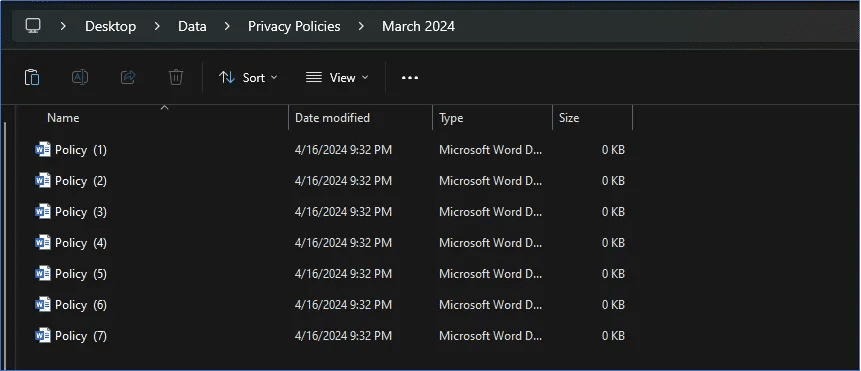
From Manual to Automatic: The Evolution of Data Processing in Tech
Data processing in tech is one of the pillars of everyday operations. Nowadays, Big Data is considered to be the key technology that businesses leverage to make decisions, and influence markets or bend it according to their necessities.
And since technology itself has come so far, it is quite easy to see how it influences the data processing business. Because according to research, data scientists spend 60% of their time organizing or analyzing the data.
So, how exactly does technology influence the evolution of data processing? And how is it different compared to manual data entry and processing? We’ll talk about how technology today can extract text from images and more, so let’s dive right into it.
Definition of Data Processing
Data processing is the practice of converting raw data into usable information through specific protocols. These protocols include the organizing of raw data into a linear format, including date, size, etc. But it also requires other necessities, such as:
- Sorting the data from the raw shape into digital/usable format.
- Organizing data according to numbers, such as dates.
- Analyzing data and using or promoting only the necessary information.
- And summarizing said data, i.e., for research or statistics.
This process is also called data manipulation as it helps extract important insights. The companies or businesses then use this data to make decisions or strategies moving forward. Usually, this falls into business intelligence or research departments.
The main purpose of data collection and processing is to improve work efficiency. Nowadays, elements like Machine Learning and AI can help efficiently extract data, but in the past, it was a lot of manual labor.
Because it involves going over information, gathering key data, and using it. Whereas AI today makes it easier by simply extracting the key information needed.
The Basics of Manual Data Entry and Processing
The process of manual data entry simply begins with a human entering data into a system. This is done through various input devices, such as keyboards or scanners, which allow the user to enter any data into a system.
The purpose of this process is to convert physical data into digital data and make it indexable, searchable, and editable. This process also involves adding said data into spreadsheets or databases, but that depends on the organization or company.
Usually, the process of data entry and processing involves five main phases, including:
- Data Collection/
- Verification
- Data Entry
- Data Organization
- Quality Assurance
The data collection and verification are usually done ahead of the data entry and processing. Then, it’s data entry time, and nowadays, it’s done with the help of tools that make it easier. Or the data is simply entered into systems by a human operator.
Then, organizing the data depends entirely on how the organization or company wishes to approach it. This could be done in spreadsheets, or in-house/cloud databases. Finally, a team of experts ensures the quality of collected and entered data through a meticulous process of quality assurance.
Role of Technology in Data Processing: How AI Makes it Easier
Data entry and processing can be quite a difficult task, and that’s why people earn a lot of money working in data entry professions. However, technology today has made it quite easy to convert physical data into digital data and use it for processing and manipulation.
The role of technology, however, begins with the invention of the keyboard for computers. It was the first main device used for data entry and still is today. However, other devices have taken the forefront in data entry, such as:
- Optical Character Recognition.
- Barcode scanners.
- General document scanners.
- Pens and other devices to read text off physical documents.
- And AI-driven IWR aka Intelligent Word Recognition tools and software kits.
These new technologies and tools like Imagetotext.io or imagetotextconverter.net have made it easier to extract text from images and use that data for processing. Besides that, it’s highly unlikely any data entry professionals today are relying on manually entering information unless it’s very precise.
Because most of the data processing and entry companies that fall under the Big Data category, use technology to quicken the pace of things.
3 Ways to Enhance Data Processing with AI Tools
Now let’s talk about the process of enhancing data processing with AI tools. Here are three main phases of the process:
1. Using Document Scanners/Cameras
The first and perhaps the most important thing to do is ensure you have a clear scan or picture of the document. If you’re in a big organization or company, it’s ideal to get scanners to make this faster. But if not, even simple pictures of documents will suffice.
2. Converting Text from Images
The next step is to use a tool like Imagetotext.io to leverage data from physical documents/sources. This tool will help you extract text from images quite easily. So, once you have the scanned images or documents, simply upload them into the tool:

Here’s how it would look ready to scan the content:

Simply tap the Submit and Extract button to commence:

Then you will see the final result of the extracted text from the image:

You can now simply start over or copy and paste/download the extracted text to your PC.
3. Indexing & Organizing Data
The next step is indexing the said data and organizing it into multiple files or folders. Let’s say a company has to create an index of various important documents, then their data could be arranged in such an assortment:

From there, the data could be found easily:

This makes it easier to not only sort out data easily but also analyze and use the data whenever needed.
Conclusion
The use of technology in data processing is going to increase as new technologies and progress come to the front. But as of today, technology has already made life easier for data scientists and data entry specialists. AI-based tools and other programs continue to help people in Big Data be productive and analyze through a ton of data easily, and efficiently.
Get your FREE PDF on "100 Ways to Try ChatGPT Today"
Generating link, please wait for: 60 seconds
Post a comment
Comments
Join the conversation and share your thoughts! Leave the first comment.